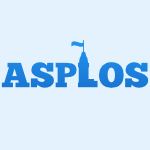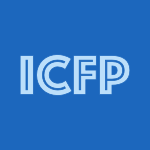28 papers:
 DATE-2015-ZhongLLZLZS #mobile #named
DATE-2015-ZhongLLZLZS #mobile #named- nCode: limiting harmful writes to emerging mobile NVRAM through code swapping (KZ, DL, LL, XZ, WL, QZ, EHMS), pp. 1305–1310.
 IFL-2014-KoopmanPJ #data type #encoding #functional #harmful #implementation
IFL-2014-KoopmanPJ #data type #encoding #functional #harmful #implementation- Church Encoding of Data Types Considered Harmful for Implementations: Functional Pearl (PWMK, RP, JMJ), p. 4.
 LCT-NLE-2014-PurgathoferL #architecture #harmful #layout
LCT-NLE-2014-PurgathoferL #architecture #harmful #layout- Layout Considered Harmful: On the Influence of Information Architecture on Dialogue (PP, NL), pp. 216–225.
 ICSE-2014-DouCW #ambiguity #detection #smell #spreadsheet
ICSE-2014-DouCW #ambiguity #detection #smell #spreadsheet- Is spreadsheet ambiguity harmful? detecting and repairing spreadsheet smells due to ambiguous computation (WD, SCC, JW), pp. 848–858.
 ITiCSE-2013-Buck #approach #reliability
ITiCSE-2013-Buck #approach #reliability- First, do no harm: a curricular approach to reliability (DB), p. 319.
 ICSE-2013-KocaguneliZBNM #development #distributed #harmful #question
ICSE-2013-KocaguneliZBNM #development #distributed #harmful #question- Distributed development considered harmful? (EK, TZ, CB, NN, TM), pp. 882–890.
 ASPLOS-2013-ParkBCLN #harmful #manycore #memory management
ASPLOS-2013-ParkBCLN #harmful #manycore #memory management- Regularities considered harmful: forcing randomness to memory accesses to reduce row buffer conflicts for multi-core, multi-bank systems (HP, SB, JC, DL, SHN), pp. 181–192.
 CIKM-2012-GyllstromEVM #css #javascript #web
CIKM-2012-GyllstromEVM #css #javascript #web- The downside of markup: examining the harmful effects of CSS and javascript on indexing today’s web (KG, CE, APdV, MFM), pp. 1990–1994.
 ICSM-2010-OlbrichCS #case study #evolution #open source #smell
ICSM-2010-OlbrichCS #case study #evolution #open source #smell- Are all code smells harmful? A study of God Classes and Brain Classes in the evolution of three open source systems (SMO, DC, DIKS), pp. 1–10.
 ICPR-2010-BecharMTB #online #recognition #video
ICPR-2010-BecharMTB #online #recognition #video- On-Line Video Recognition and Counting of Harmful Insects (IB, SM, MT, FB), pp. 4068–4071.
 OSDI-2010-XiongPZZM #ad hoc #harmful
OSDI-2010-XiongPZZM #ad hoc #harmful- Ad Hoc Synchronization Considered Harmful (WX, SP, JZ, YZ, ZM), pp. 163–176.
 ICFP-2009-Steele #execution #functional #parallel
ICFP-2009-Steele #execution #functional #parallel- Organizing functional code for parallel execution or, foldl and foldr considered slightly harmful (GLSJ), pp. 1–2.
 CHI-2009-CrabtreeRTB #harmful
CHI-2009-CrabtreeRTB #harmful- Ethnography considered harmful (AC, TR, PT, GB), pp. 879–888.
 ICSM-2008-BettenburgPZK #debugging #harmful #question
ICSM-2008-BettenburgPZK #debugging #harmful #question- Duplicate bug reports considered harmful ... really? (NB, RP, TZ, SK), pp. 337–345.
 CHI-2008-GreenbergB #evaluation #harmful #usability
CHI-2008-GreenbergB #evaluation #harmful #usability- Usability evaluation considered harmful (some of the time) (SG, WB), pp. 111–120.
 MSR-2007-LozanoWN #empirical
MSR-2007-LozanoWN #empirical- Evaluating the Harmfulness of Cloning: A Change Based Experiment (AL, MW, BN), p. 18.
 PLDI-2007-NarayanasamyWTEC #analysis #automation
PLDI-2007-NarayanasamyWTEC #analysis #automation- Automatically classifying benign and harmful data racesallusing replay analysis (SN, ZW, JT, AE, BC), pp. 22–31.
 WCRE-2006-KapserG #harmful
WCRE-2006-KapserG #harmful- “Cloning Considered Harmful” Considered Harmful (CK, MWG), pp. 19–28.
 HPDC-2006-Casanova #on the
HPDC-2006-Casanova #on the- On the Harmfulness of Redundant Batch Requests (HC), pp. 255–266.
 ICSM-2005-HaoZZMS #case study #fault #locality #reduction #testing #using
ICSM-2005-HaoZZMS #case study #fault #locality #reduction #testing #using- Eliminating Harmful Redundancy for Testing-Based Fault Localization Using Test Suite Reduction: An Experimental Study (DH, LZ, HZ, HM, JS), pp. 683–686.
 CIKM-2005-TerraW #documentation #feedback
CIKM-2005-TerraW #documentation #feedback- Poison pills: harmful relevant documents in feedback (ELT, RW), pp. 319–320.
 OSDI-2004-WalfishSKBMS #harmful
OSDI-2004-WalfishSKBMS #harmful- Middleboxes No Longer Considered Harmful (MW, JS, MNK, HB, RM, SS), pp. 215–230.
 ICEIS-1999-YooYP #data access #internet
ICEIS-1999-YooYP #data access #internet- A New Method to Block Access to Illegal and Harmful Content on the Internet (BJY, HGY, MSP), pp. 732–739.
 TOOLS-EUROPE-1999-Simons #case study #harmful
TOOLS-EUROPE-1999-Simons #case study #harmful- Use Cases Considered Harmful (AJHS), pp. 194–203.
 IWPC-1998-BrandSV #harmful #legacy #parsing
IWPC-1998-BrandSV #harmful #legacy #parsing- Current Parsing Techniques in Software Renovation Considered Harmful (MvdB, MPAS, CV), pp. 108–117.
 KDD-1997-Zytkow #concept #equation
KDD-1997-Zytkow #concept #equation- Knowledge = Concepts: A Harmful Equation (JMZ), pp. 104–109.
 ECHT-1990-Young #harmful
ECHT-1990-Young #harmful- Linking Considered Harmful (LDY), pp. 238–249.
 SEI-1989-Friedman #education #harmful #re-engineering
SEI-1989-Friedman #education #harmful #re-engineering- A Separate Undergraduate Software Engineering Curriculum Considered Harmful (FLF), pp. 267–270.
 DATE-2015-ZhongLLZLZS #mobile #named
DATE-2015-ZhongLLZLZS #mobile #named IFL-2014-KoopmanPJ #data type #encoding #functional #harmful #implementation
IFL-2014-KoopmanPJ #data type #encoding #functional #harmful #implementation LCT-NLE-2014-PurgathoferL #architecture #harmful #layout
LCT-NLE-2014-PurgathoferL #architecture #harmful #layout ICSE-2014-DouCW #ambiguity #detection #smell #spreadsheet
ICSE-2014-DouCW #ambiguity #detection #smell #spreadsheet ITiCSE-2013-Buck #approach #reliability
ITiCSE-2013-Buck #approach #reliability ICSE-2013-KocaguneliZBNM #development #distributed #harmful #question
ICSE-2013-KocaguneliZBNM #development #distributed #harmful #question ASPLOS-2013-ParkBCLN #harmful #manycore #memory management
ASPLOS-2013-ParkBCLN #harmful #manycore #memory management CIKM-2012-GyllstromEVM #css #javascript #web
CIKM-2012-GyllstromEVM #css #javascript #web ICSM-2010-OlbrichCS #case study #evolution #open source #smell
ICSM-2010-OlbrichCS #case study #evolution #open source #smell ICPR-2010-BecharMTB #online #recognition #video
ICPR-2010-BecharMTB #online #recognition #video OSDI-2010-XiongPZZM #ad hoc #harmful
OSDI-2010-XiongPZZM #ad hoc #harmful ICFP-2009-Steele #execution #functional #parallel
ICFP-2009-Steele #execution #functional #parallel CHI-2009-CrabtreeRTB #harmful
CHI-2009-CrabtreeRTB #harmful ICSM-2008-BettenburgPZK #debugging #harmful #question
ICSM-2008-BettenburgPZK #debugging #harmful #question CHI-2008-GreenbergB #evaluation #harmful #usability
CHI-2008-GreenbergB #evaluation #harmful #usability MSR-2007-LozanoWN #empirical
MSR-2007-LozanoWN #empirical PLDI-2007-NarayanasamyWTEC #analysis #automation
PLDI-2007-NarayanasamyWTEC #analysis #automation WCRE-2006-KapserG #harmful
WCRE-2006-KapserG #harmful HPDC-2006-Casanova #on the
HPDC-2006-Casanova #on the ICSM-2005-HaoZZMS #case study #fault #locality #reduction #testing #using
ICSM-2005-HaoZZMS #case study #fault #locality #reduction #testing #using CIKM-2005-TerraW #documentation #feedback
CIKM-2005-TerraW #documentation #feedback OSDI-2004-WalfishSKBMS #harmful
OSDI-2004-WalfishSKBMS #harmful ICEIS-1999-YooYP #data access #internet
ICEIS-1999-YooYP #data access #internet TOOLS-EUROPE-1999-Simons #case study #harmful
TOOLS-EUROPE-1999-Simons #case study #harmful IWPC-1998-BrandSV #harmful #legacy #parsing
IWPC-1998-BrandSV #harmful #legacy #parsing KDD-1997-Zytkow #concept #equation
KDD-1997-Zytkow #concept #equation ECHT-1990-Young #harmful
ECHT-1990-Young #harmful SEI-1989-Friedman #education #harmful #re-engineering
SEI-1989-Friedman #education #harmful #re-engineering









